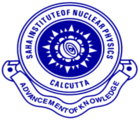Speaker
Description
The physics governing the production of the early emission of gamma‑ray bursts (GRBs) is still poorly understood. The early emission is usually caught by a wide field of view gamma‑ray instruments in the range of 10 keV-10 MeV, but to date, at higher energies (above 100 GeV) it has not been detected yet. I will discuss the multi-messenger observational strategies to detect the early emission of short GRBs at very-high-energies (VHE; E > 10 GeV) in the era of the third generation gravitational wave detectors Einstein Telescope (ET) and Cosmic Explorer (CE). We evaluate the joint detection efficiency by the Cherenkov Telescope Array (CTA) . We take into account the expected capabilities to detect and localise gravitational wave events in the inspiral phase of the neutron star binaries and to provide an early-warning alert for upcoming short GRBs, thanks to the proposed low frequency response of ET. We discuss possible VHE components from the synchrotron self Compton components in the leptonic GRB model, high energy tail of the hadronic GRB model as well as external inverse Compton emission as viable candidates in the energy band of 10 GeV - 10 TeV. I will also discuss our discovery of the GeV emission from a compact binary merging event which opened a window for probing the MWL emission with an extended emission. This further increases the possibility of detection of the compact mergers in high energy and very high energy gamma-rays.
